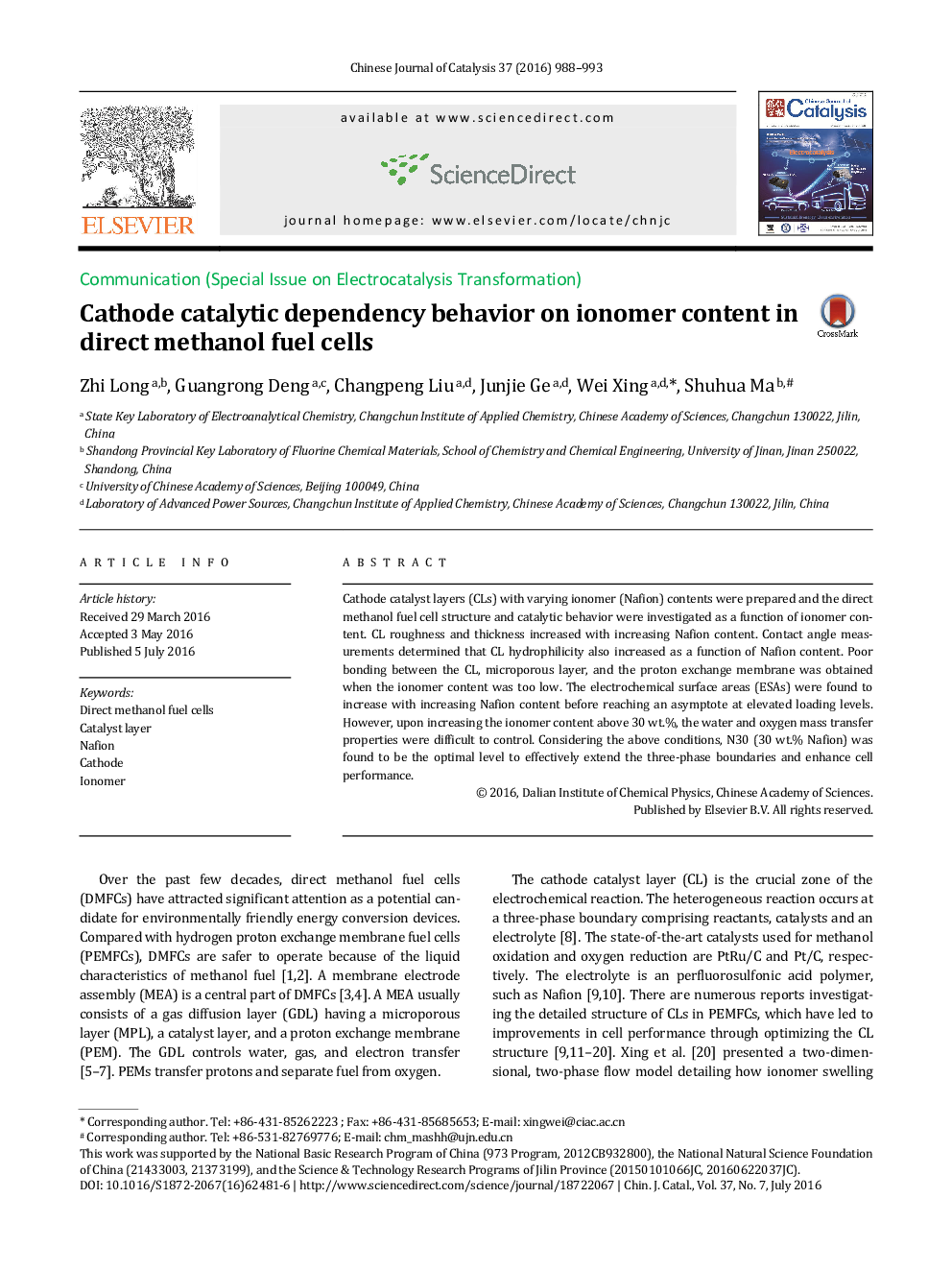| Article ID | Journal | Published Year | Pages | File Type |
|---|---|---|---|---|
| 59341 | Chinese Journal of Catalysis | 2016 | 6 Pages |
Cathode catalyst layers (CLs) with varying ionomer (Nafion) contents were prepared and the direct methanol fuel cell structure and catalytic behavior were investigated as a function of ionomer content. CL roughness and thickness increased with increasing Nafion content. Contact angle measurements determined that CL hydrophilicity also increased as a function of Nafion content. Poor bonding between the CL, microporous layer, and the proton exchange membrane was obtained when the ionomer content was too low. The electrochemical surface areas (ESAs) were found to increase with increasing Nafion content before reaching an asymptote at elevated loading levels. However, upon increasing the ionomer content above 30 wt.%, the water and oxygen mass transfer properties were difficult to control. Considering the above conditions, N30 (30 wt.% Nafion) was found to be the optimal level to effectively extend the three-phase boundaries and enhance cell performance.
Graphical AbstractCathode catalyst layers having low ionomer content hinders proton transfer, while high ionomer content limits the control of water and O2 mass transfer. Direct methanol fuel cells containing 30 wt.% Nafion show optimal cell performance.Figure optionsDownload full-size imageDownload as PowerPoint slide
